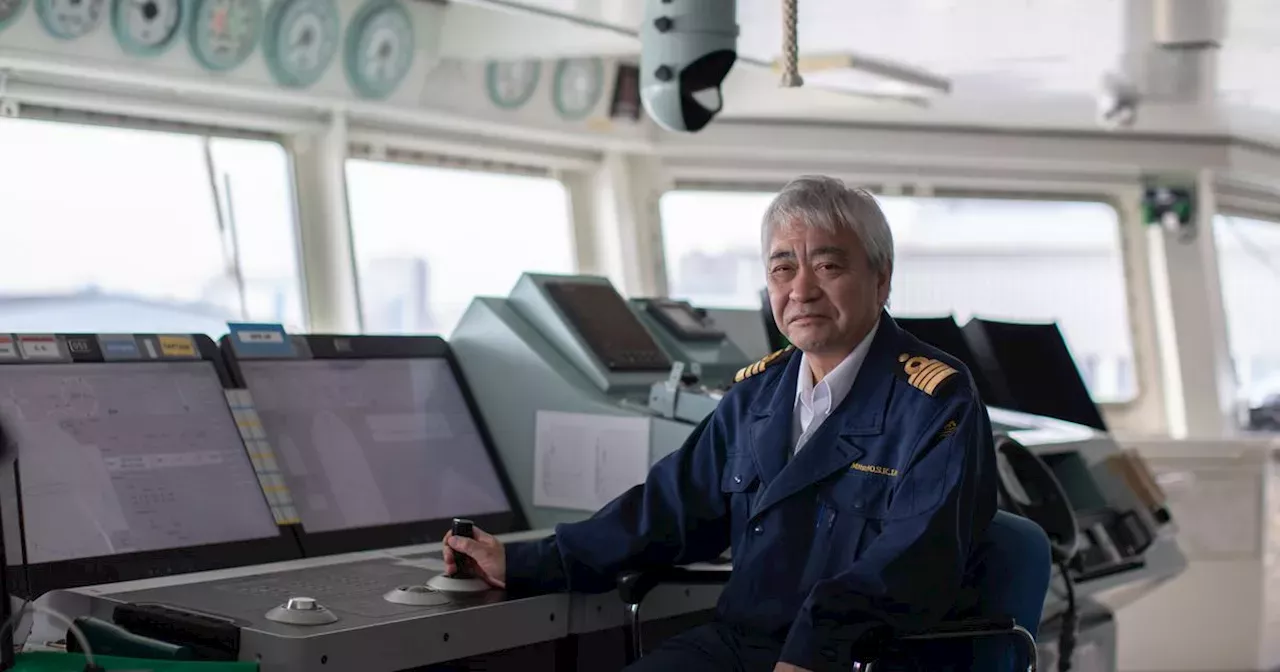The internet is carried around the world by hundreds of thousands of miles of slender cables that sit at the bottom of the ocean.
They turned on the television. An emergency alert showed that an earthquake had struck 130 miles northeast of their location. The shaking finally stopped, and in the silence, Hirai’s mind leapt to what would come next: a tsunami. But Hirai also began to think about the work he knew lay ahead. The Ocean Link was one of a small number of ships that maintain the subsea cables that carry 99 percent of the world’s data. Positioned in strategic locations around the planet, these ships stand ready to sail out and fix faults the moment they are detected, and most of the time, they are more than equal to the task. But earthquakes, Hirai knew from experience, were different.
A map of the world showing the dozens of fibre optic cable systems which stretch across the oceans, connecting continents and island chains. Some of these cables are extremely long. The map animates to show the cables laid down between 1989 and the present, with planned cables up to 2027 also displayed.Corporations would lose the ability to coordinate overseas manufacturing and logistics.
KCS has around 80 employees, many of whom, like Hirai, have worked there for decades. Because the industry is small and careers long, it can seem like everyone knows one another. People often refer to it as a family. Shipboard life lends itself to a strong sense of camaraderie, with periods of collaboration under pressure followed by long stretches — en route to a worksite or waiting for storms to pass — without much to do but hang out.
“It hasn’t changed in 150 years,” said Alasdair Wilkie, chair of the Atlantic Cable Maintenance & Repair Agreement . “The Victorians did it that way and we’re doing it the same way. I just think it’s one of those things that, if it ain’t broke, don’t fix it.” The sky was overcast and low, and the ship rocked on a building swell as Hirai walked out onto the pocked green-painted deck and held out the wand of his Geiger counter to see what the wind carried. To his relief, it registered only background radiation. Next, he walked to the side and lowered a sensor into the sea. Again, nothing. He would do it all again in two hours, but for now, work could begin.
From this point onward, Hirai or another engineer would be in the cable control room — an instrument-filled command center behind the bridge — their attention fixed on the tension meter, a circular dial set into a pale green wall. The retro-looking analog gauge was less precise than a digital one but far better for intuitively conveying changes in tension than a jittery numerical readout. The steady wavering of its arm would mean the grapnel was plowing through the gray ooze of the ocean floors.
The morning passed, then the afternoon, Hirai suiting up every few hours to check for radiation. The drum engine continued its slow rotation. Night fell. Half past midnight, after 19 hours of winding, the cable reached the surface. The grapnel, cable, and chains were slowly lowered back over the prow and into the sea, the ship maneuvering delicately to minimize any sudden changes in tension. Once the cable was safely beneath the waves, they released the chains. Suddenly, pulled tight over the blade, the cable split and sank back to the ocean floor.
This system has been able to cope with the day-to-day cadence of cable breaks, but margins are thin and contracts are short-term, making it difficult to convince investors to spend $100 million on a new vessel. These and other recent events, like the 2022 Nord Stream pipeline explosion, have led governments to take a greater interest in cable security, often focusing on the specter of a deliberate attack. Late last year, NATO convened a symposium on undersea infrastructure and the future of “seabed warfare,” while the UK commissioned naval vessels to patrol their subsea connections.
“I don’t know if anyone saw, but during the pandemic, submarine cables actually went viral on TikTok,” said one panelist, a young cable engineer from Vodafone. “People didn’t know they existed, and then suddenly, out of nowhere, they were viral. I think it’s engaging with youth and children through their own avenues — yes, you can have science museums and things like that, but they are online, they are on their iPads, they’re on their phones.
Hirai decided the only solution was to abandon the tangled mess and lay a new system on top of it. It would mean abandoning miles of cable as well as a branching unit: a 2,000-pound device that splits one cable into two different lines going to two destinations. But by reducing the number of loops, it would reduce the amount of cable required. Even then, it wasn’t clear they had enough.
With the branching unit, they had to complete two final splices — one for each leg — then deposit the whole apparatus to the ocean floor intact. This, the Ocean Link crew knew, would be its own challenge. A 2,000-pound weight dangling for miles through the water column can do funny things. In 2008, the Ocean Link was called to recover a branching unit that another cable ship accidentally dropped into the Japan Trench while trying to deploy it.
